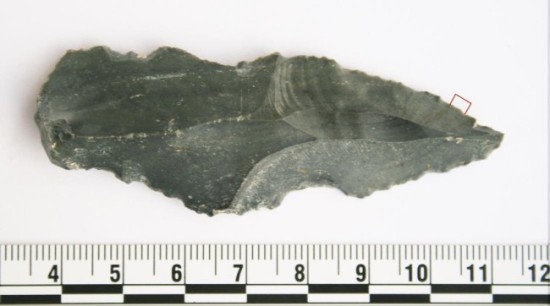
Researchers uncovered evidence that prehumans developed tools for hunting earlier than presumed.
Anthropologists exhumed new evidence that hominins existing 250,000 years ago or 50,000 years prior to the earliest modern humans in Africa used tools to butcher and prepare animal flesh for consumption, according to a published study in the Journal of Archaeological Science. This new data could reveal more about our mysterious beginnings.
The discovery was led by April Nowell of the University of Victoria in Canada. Researchers excavated the dry lands of northeast Jordan, which was once the location of Azraq Oasis. But later in the 20th century, the water was diverted to service urban settlements and the oasis dried up. Which, means, the arid location was once a spring-fed wetland.
Scientists examined multiple layers of geologic strata. The upper stratum corresponded to an epoch one-quarter of a million years ago revealing 10,000 different types of artifacts made from flint, river stones, and other localized ematerials. Of these, projectiles, scrapers, and mostly ax heads were discovered. Archeologists claim that the ax heads were a paleolithic (2.5 million to 10,000 years ago) Swiss Army knife.
Researchers then picked 44 of the most preserved relics and tested them with antiserum to search for proteins, particularly from animals targeted as potential prey. Time would have washed out any marks on the surfaces of the tools, but microscopic traces remain.
Specifically, investigators found protein markers demonstrating the blood of horse, rhinoceros, wild cattle, and camel—all of which were indigenous to the former fertile region.
The type of animals hunted also implicate the development of more tactical weapons and strategies. A duck, for instance, is more cunning, so our ancestors may have used the hides of larger animals to throw over unaware ducks in their nests.

Leave a Reply